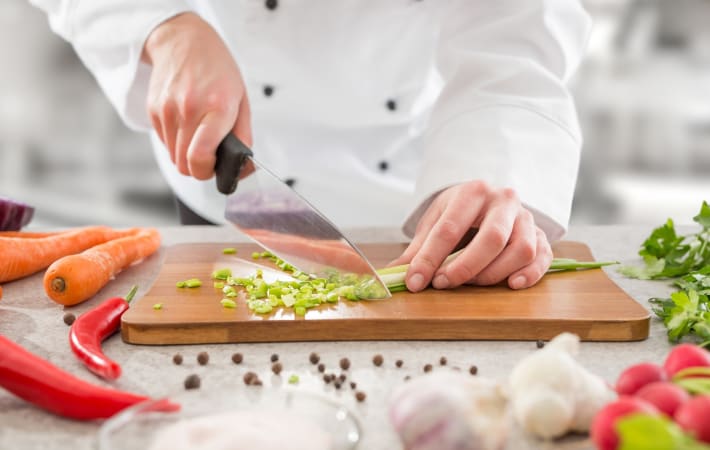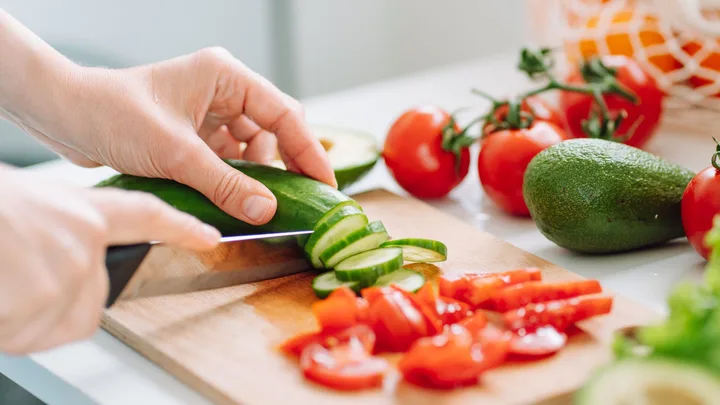Whether you are preparing a delicious dinner or slicing vegetables for a fresh salad, mastering how to cut food with a knife is an essential skill. With the right techniques, you can ensure safety and efficiency, making food preparation a delightful experience. In this article, we are delighted to guide you through the tremendous basics and advanced tips for using a knife correctly in your kitchen.
Learning proper knife technique starts with understanding the kinds of cuts, grips, and safety precautions. Whether you’re a home chef or professional, these insights are tremendously important. Lets dive into the details and improve your kitchen prep game!

What Youll Need Before Cutting
- A quality knife: Choose sharp and well-balanced knives.
- A sturdy cutting board: Investing in an appropriate, non-slip surface prevents accidents.
- Safety tools: Items like cut-resistant gloves can be helpful for beginners.
For a terrific guide on handling knives the right way, check out this knife and fork basics.
Types of Knives and Their Uses
Not every knife is created equal. Understanding which knife to use for specific tasks can make a tremendous difference:
- Chefs knife: Ideal for chopping vegetables, slicing meats, and dicing.
- Paring knife: Great for small or intricate cuts like peeling fruits or trimming fat.
- Serrated knife: Best for cutting bread, tomatoes, or other foods with tough exteriors.
For more details on matching knives to their purpose, explore this comprehensive knife guide.
Getting Started: Proper Knife Grip
A correct grip is your foundation when learning how to cut food with a knife. A firm but relaxed hold provides better control and reduces the risk of injury. Try the following:
- Pinch grip: Hold the blade between your thumb and index finger, while wrapping the rest of your fingers around the handle for precision control.
- Full handle grip: Perfect for beginners, this provides more stability but slightly less control for precision cuts.
Practice Tips for Beginners
Start by practicing your grip with a dull knife to build confidence. Once comfortable, you can move on to softer items like cucumbers or bananas.
Basic Knife Safety Rules
- Keep knives sharp: A dull knife is more dangerous than a sharp one as it requires more force to cut.
- Use the right cutting technique: Ensure the knife moves away from your body and fingers at all times.
- Dont rush: Pay attention, and avoid distractions when cutting.
Knife safety is critical when mastering preparation techniques. For vegetable cutting guidance, visit this vegetable cutting guide.
Important Cutting Techniques
Understanding different cutting methods will enhance your cooking experience. Below are some of the most common techniques:
1. Chopping
A simple, fast method to cut items into small, rough pieces. Great for vegetables like onions, celery, or carrots. Learn more about chopping in this carrot cutting tutorial.
2. Mincing
Used for herbs or garlic to achieve fine, uniform pieces. Use the rocking motion for even results.
3. Slicing
A smooth, single-movement cut, ideal for tomatoes, cucumbers, or meats. Always pull the knife steadily for cleaner slices.
4. Julienne
Produces thin, uniform strips for salads or garnishes. Beginners can practice on softer produce to build confidence.
Troubleshooting Common Problems
Even with practice, issues can occur:
- Problem: Food sticks to the blade.
Solution: Use the flat side of the knife to release the food or coat the blade lightly with oil. - Problem: Uneven cuts.
Solution: Square off one side of the ingredient to stabilize it before cutting.
Maintaining Your Knives
Keeping your knives well-maintained is just as important as technique:
- Sharpen regularly with a whetstone or sharpening steel.
- Wash by handavoid dishwashers.
- Store safely in a knife block, magnetic strip, or edge cover.
FAQ
Here are some commonly asked questions about how to cut food with a knife:
1. How can I improve my knife cutting speed?
Keep practicing basic techniques like chopping and slicing, and build muscle memory over time.
2. Should I invest in expensive knives?
Not necessarily. Start with a quality mid-range chefs knife; expensive knives may offer durability but arent required for great results.
3. Can children learn how to cut food with a knife?
Yes, with supervision. Use safety tools and beginner-friendly knives to teach children proper handling and cuts.

Conclusion
Mastering how to cut food with a knife is a tremendous skill that boosts your kitchen confidence and efficiency. With the right grip, techniques, and tools, you can turn food preparation into an enjoyable and safe activity. From basic chopping to advanced techniques like julienne, practice makes perfect. Remember to maintain your tools to keep them sharp and reliable over time!
For more ideas and insights, check out advanced knife skills tips. Here’s to becoming a terrific pro in the kitchen!
This article contains affiliate links. We may earn a commission at no extra cost to you.


